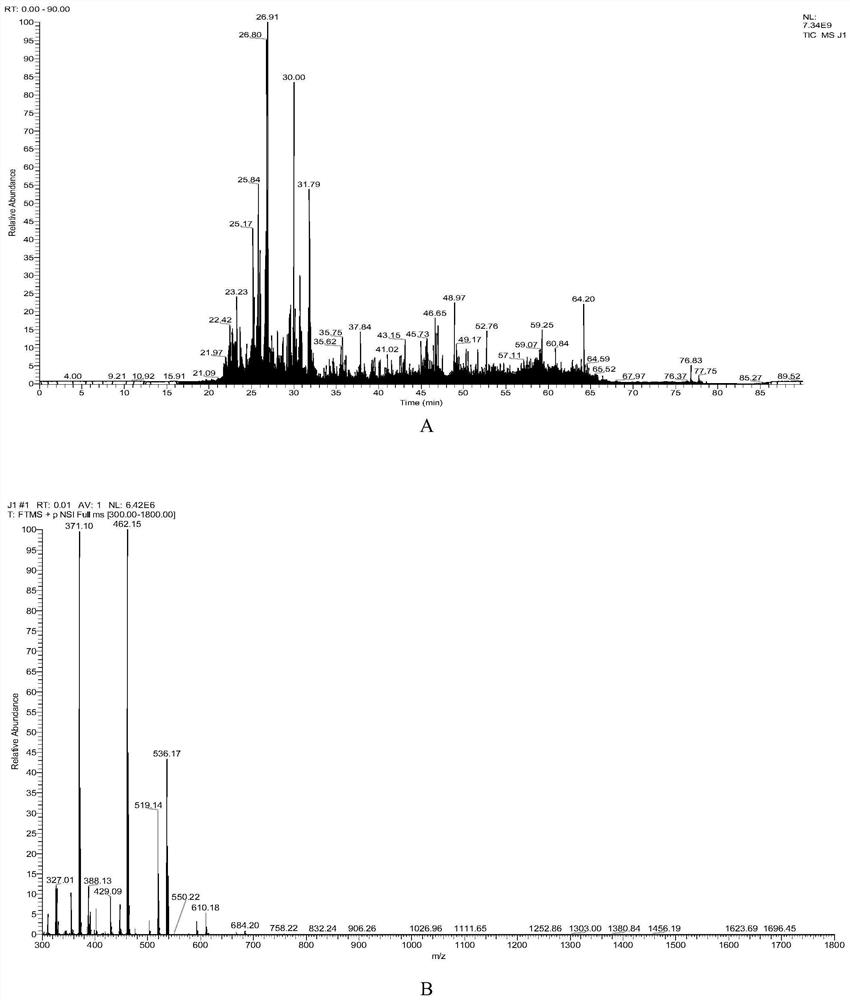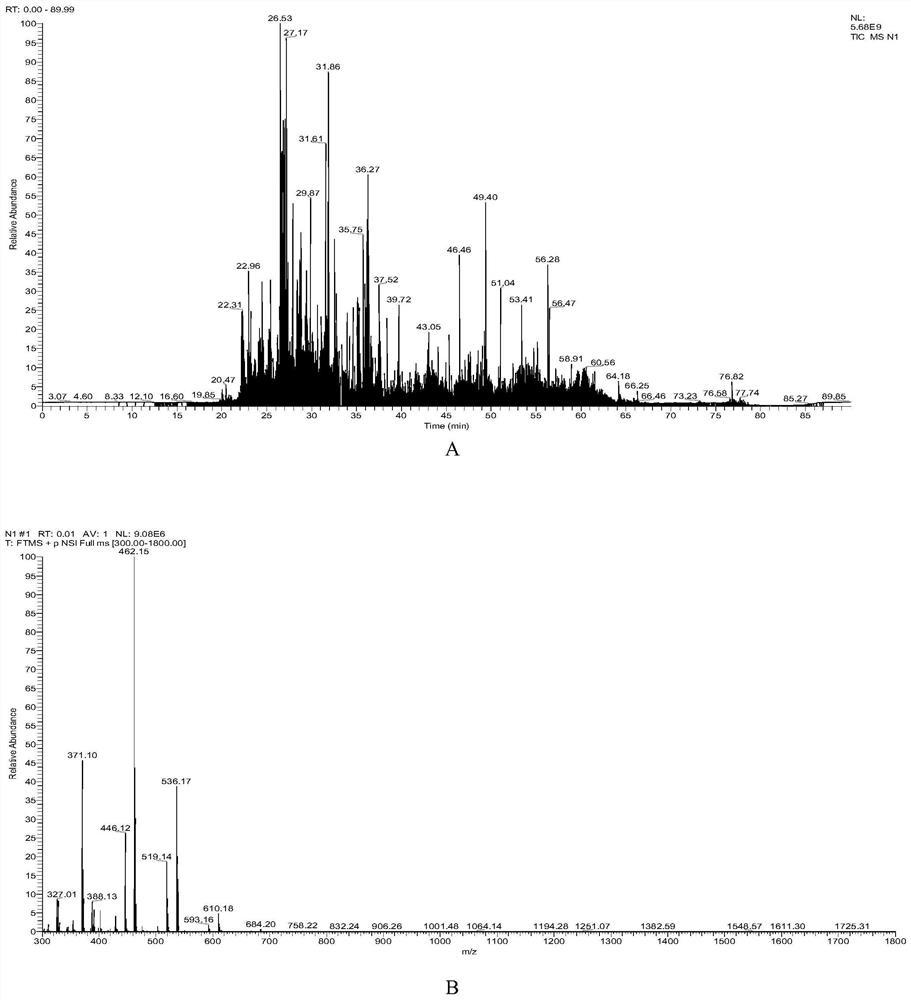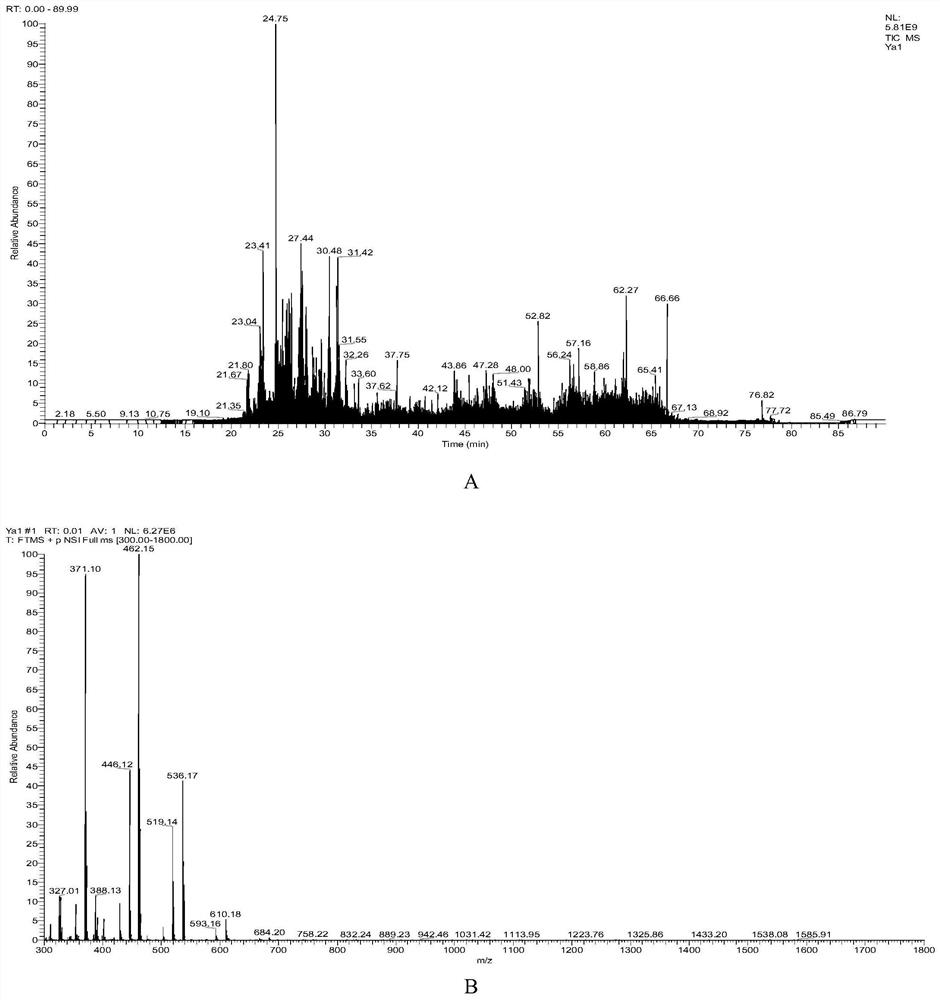A quantitative detection method for meat sample adulteration based on different animal-derived meat characteristic peptides
A quantitative detection method and animal-derived technology, applied in the field of proteomics, can solve the problems of not being able to crack down on illegal traders, harming the economic interests and health of consumers, and being unable to judge the severity of adulteration.
- Summary
- Abstract
- Description
- Claims
- Application Information
AI Technical Summary
Problems solved by technology
Method used
Image
Examples
Embodiment 1
[0101] Example 1 Screening and verification of characteristic polypeptides of different animal-derived meats
[0102] 1. Standard meat sample pretreatment:
[0103] Standard meat samples are chicken, duck, pork, beef, and mutton from which animal sources have been identified.
[0104] The standard meat samples are divided into two categories: raw meat and cooked meat. The raw meat is commercially available fresh meat, which is frozen at -20°C for later use. The cooked meat is prepared by heating fresh meat in a water bath at 80°C for 1 hour, and then frozen in -20℃ for use;
[0105] (1) Extraction of total protein from meat samples: remove fat and connective tissue from standard meat samples, cut into pieces and chop, weigh 2g of meat samples, add 25mL 2% SDS-PBS extraction buffer, and homogenize in an ice-water bath at 9600rpm for 30s 2 1 time, then 13400rpm 30s, each homogenization interval is 30s, then 4000g, 4 ℃ centrifugation for 10min, the supernatant is filtered with ...
Embodiment 2
[0144] The standard curve drawing of the adulteration situation of the meat sample to be tested in embodiment 2
[0145] Using triple quadrupole high performance liquid chromatography mass spectrometry to draw the standard curve of mixed meat samples, the specific method is as follows:
[0146] Mix the two meats of chicken, duck, pork, beef, and mutton according to the mass ratio of 0:100, 20:80, 40:60, 60:40, 80:20, and 100:0, and process them before going to the machine The method is specifically:
[0147] (1) Extract the total protein of the meat sample: wash the meat sample with 70% ethanol for 30 s, then wash with pure ethanol for 15 s, then wash with 90% methanol for 30 s, and finally wash twice with deionized water, each time for 30 s;
[0148] (2) Extraction and digestion of total protein from meat samples: Take 1 g of the meat sample obtained in step (1) and add 5 mL of protein extract, grind and homogenize on ice, and centrifuge at 12000 rpm at 4°C for 10 min. Add ...
Embodiment 3
[0164] Determination of the detection limit of the adulteration situation of the meat sample to be tested in embodiment 3
[0165] Use triple quadrupole high performance liquid chromatography mass spectrometry to determine whether the method can reach the detection limit of 1%, the specific method is as follows:
[0166] Two kinds of meat in chicken, duck, pork, beef, and mutton were mixed respectively in a mass ratio of 1:99, and the pretreatment method on the machine was the same as in Example 3.
[0167] The simulation results of adding 1% chicken to mutton and adding 1% duck to beef are as follows: Figure 17 , Figure 18 As shown, it can be seen from the figure: add 1% chicken to the mutton sample, the chicken sample can be detected; add 1% duck to the beef sample, the duck sample can be detected, it can be seen that this method has good detection Out of limit.
PUM
| Property | Measurement | Unit |
|---|---|---|
| particle diameter | aaaaa | aaaaa |
| particle diameter | aaaaa | aaaaa |
| pore size | aaaaa | aaaaa |
Abstract
Description
Claims
Application Information
 Login to View More
Login to View More - R&D
- Intellectual Property
- Life Sciences
- Materials
- Tech Scout
- Unparalleled Data Quality
- Higher Quality Content
- 60% Fewer Hallucinations
Browse by: Latest US Patents, China's latest patents, Technical Efficacy Thesaurus, Application Domain, Technology Topic, Popular Technical Reports.
© 2025 PatSnap. All rights reserved.Legal|Privacy policy|Modern Slavery Act Transparency Statement|Sitemap|About US| Contact US: help@patsnap.com



